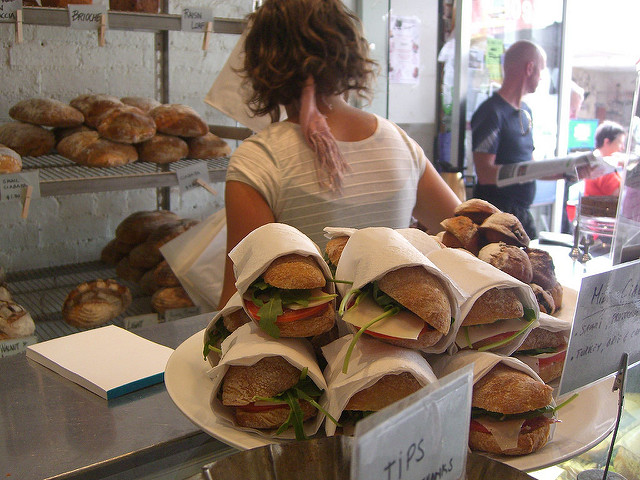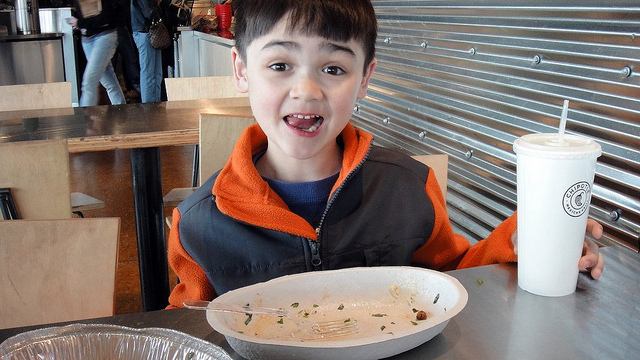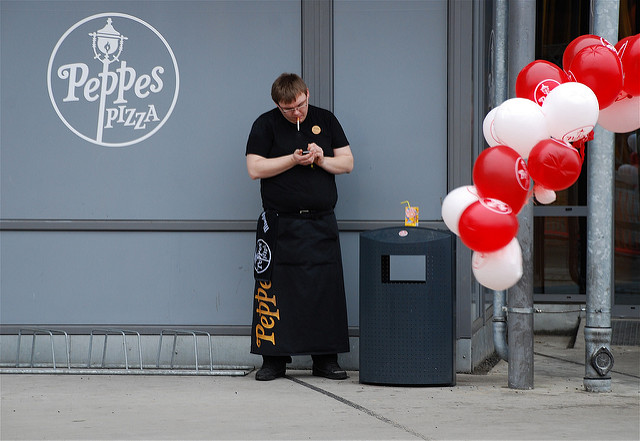Unlock the Magic in Your Story Now
Get the Free 20 questions to Ask Before Launching Your Idea workbook when you sign up for occasional updates.
Get the Free 20 questions to Ask Before Launching Your Idea workbook when you sign up for occasional updates.
Articles filed in: Storytelling
The Value Story
filed in Marketing, Storytelling, Strategy
 During Tulip Mania, the new merchant class who wanted their gardens to reflect their newfound success, is said to have traded acres of land for a single flower bulb. The scarcer the bulbs became, the more valuable they were perceived to be. As a commodity, the tulip’s inherent value was derived from the fact that there were more buyers than tulips.
During Tulip Mania, the new merchant class who wanted their gardens to reflect their newfound success, is said to have traded acres of land for a single flower bulb. The scarcer the bulbs became, the more valuable they were perceived to be. As a commodity, the tulip’s inherent value was derived from the fact that there were more buyers than tulips.
It wasn’t a sustainable business model.
Today we live in an age of abundance, where it’s becoming more difficult to sustainably create value with a purely status driven, scarcity strategy. Luxury brands like Gucci, Prada and Ralph Lauren are experiencing tough times as they struggle to remain relevant and profitable.
As people’s values change, their value story changes too. What millennials value and invest in,
is different to what their parents were prepared to spend money on.
All business success depends on the business’s value creation story aligning with the customer’s value story. We not only succeed by being important and useful to our customers. We win by being worthy of their time, attention and financial outlay. Our brands become valuable not simply by creating value in the moment, but by valuing and adapting to the changing narrative of the people we serve.
It’s pointless shouting about how great your tulips are to a customer who wants to grow thyme.
Image by Hammerin Man
How Will You Win?
filed in Storytelling, Strategy
 All success at some level is about winning. Not necessarily coming first, but certainly reaching some kind of goal or destination. The truth is that most of us are terrible at articulating exactly what the plan to get there is. The ability to do this is probably the single most important competitive advantage of all successful entrepreneurs.
All success at some level is about winning. Not necessarily coming first, but certainly reaching some kind of goal or destination. The truth is that most of us are terrible at articulating exactly what the plan to get there is. The ability to do this is probably the single most important competitive advantage of all successful entrepreneurs.
Answering this question forces us to put a stake in the ground, to get specific, to stop being vague about where our true advantages lie. Once you commit to that goal, you begin to articulate and take action on the steps to get there.
Imagine how other entrepreneurs might have answered this question:
Dollar Shave Club
We will win by providing a better quality product direct to our customer at a fair price.
Everlane
We will win by being the most transparent fashion brand on the planet.
Little Flowers
We will win by making the gesture of flower giving simpler and more affordable.
You don’t have to be first to break the tape, but you need to know how you’re going to make it across the finish line. How will you win? What do you need to do now and next, in order to do that?
Image by Philo Nordlund
Consumers Don’t Just Want Better Products, They Want Better Narratives
filed in Marketing, Storytelling
 Sixty years ago, when the world was smaller, people wanted to pay once for something and for the thing to last. We transitioned to an era where we no longer knew as much about the provenance of a product. That fact changed our perception and expectations of quality. We were a little more forgiving as long as the price and the quality story matched. Today though consumers want both.
Sixty years ago, when the world was smaller, people wanted to pay once for something and for the thing to last. We transitioned to an era where we no longer knew as much about the provenance of a product. That fact changed our perception and expectations of quality. We were a little more forgiving as long as the price and the quality story matched. Today though consumers want both.
It’s not enough to have a great product, that’s well-made. Savvy customers want to know its backstory. More and more people are keen to understand that the things they invest in were made with care and intention. They want the product story to reflect an understanding of the context of their story. They want us to demonstrate that we know why they are buying this particular product, and how it shapes their lives and their narrative.
Customers don’t just want us to make things better. They want us to have and tell better stories.
Image bt Trekking Rinjani
Who First?
filed in Marketing, Storytelling
 The realisation of an opportunity to solve a problem for a specific group of people is at the heart of every business success story. Sometimes the potential customer already knows their problem or need exists, but often they are not actively looking for a solution.
The realisation of an opportunity to solve a problem for a specific group of people is at the heart of every business success story. Sometimes the potential customer already knows their problem or need exists, but often they are not actively looking for a solution.
It’s hard to give answers to people who are not asking questions.
As a marketer, you have two choices. You can convince the non-believers that they want what you have, or you can find and serve a core group of people who are open to trying something new or different—then help them to succeed wildly and give them a story to tell.
The Colour Run started with one event and 6,000 participants in 2011. The following year 600,000 participated at 50 events across America. It turned out that a lot of people felt excluded from running events, but they would take part if events were less competitive and more fun. Those first customers were the hardest to get and the most important to please.
Who are you planning to reach first and what story will you give them to tell?
Image by Thomas Hawk.
Owning The Story
filed in Storytelling, Strategy
 The little deli around the corner just started opening an hour earlier on weekday mornings. Of course, it makes sense for a business located in a walkable neighbourhood to serve commuters who will grab a coffee on the way to work and maybe even buy a sandwich for lunch later in the day.
The little deli around the corner just started opening an hour earlier on weekday mornings. Of course, it makes sense for a business located in a walkable neighbourhood to serve commuters who will grab a coffee on the way to work and maybe even buy a sandwich for lunch later in the day.
The last time I was there I got chatting to one of the assistants.
“Why did you decide to open earlier in the morning?” I asked.
“Oh, ‘they’ (meaning the management) wanted to give it a go to see how it went,” she replied.
Sadly we disown our role as part of the collective in this way all the time. We talk about how the country, community or business needs a new direction, all the while forgetting that we are the country, the community and the business. There is no ‘they’—there is only ‘we’.
The secret of successful organisations of any kind is that they think like a team, which in turn means they act like a team. When we abandon the ‘them and us’ mindset and own our part in the story, magic happens.
Image by Alpha
Why People Choose This And Not That
filed in Marketing, Storytelling
 A lifetime ago, before adblockers and Netflix we sat through TV ads that suggested (often questionable) tangible benefits. Washing-up liquids gave us hands as soft as our face, and chocolate makers created treats we could eat between meals without ruining our appetite. These ads sold us a story about how we could be better versions of ourselves.
A lifetime ago, before adblockers and Netflix we sat through TV ads that suggested (often questionable) tangible benefits. Washing-up liquids gave us hands as soft as our face, and chocolate makers created treats we could eat between meals without ruining our appetite. These ads sold us a story about how we could be better versions of ourselves.
While the media morphed and moved on—as living, breathing, thinking and most importantly feeling, human beings our motivations haven’t changed. We might be more aware of how marketing manipulates, but what we want deep down is still the same. Any buying decision we make, from cars to food, and yes, even toilet paper is made because of our internal narrative.
“I drive a Prius because……”
“I never give my kids frozen food because…..”
“I buy this toilet paper because…..”
Of course, there are the rational explanations about savings, or harmful additives and greenhouse gases, but the most powerful reasons are intangible and not articulated.
“Because I’m a good mother, a responsible citizen or a caring person.”
These internal narratives are not openly shared, which makes it all the more important for marketers to understand them. We switched from cabs to Uber because we hate uncertainty and from Coke to bottled water, to reusable cups because doing that reinforced the story we wanted to believe about ourselves.
Every successful brand fills in the blanks of the customer’s internal narrative. Can you?
Our customers shop here/use us because…..
Image by CK
What’s Your Big Idea?
filed in Storytelling, Strategy
 Every great brand leads with one big idea. The big idea is what the brand stands for—it’s core belief. Articulating the big idea is harder than you think, living it every day is even harder than that.
Every great brand leads with one big idea. The big idea is what the brand stands for—it’s core belief. Articulating the big idea is harder than you think, living it every day is even harder than that.
The brands that do have a much easier time differentiating themselves from the competition. Here are a few examples.
Starbucks—The local cafe should be a ‘third place’ between home and work.
Marie Kondo—Tidying up has the power to transform your life.
Warby Parker—Prescription eyewear should be stylish and affordable (under $100).
Go-To—Skin care should be free of confusion, cruelty and faux-science.
Lune—A great croissant is created with attention to detail at every stage in the making process.
Patagonia—Business must inspire and implement solutions to the environmental crisis and do no harm.
School of Life—Emotional Intelligence is a life skill that everyone needs help to develop.
Banksy—Art belongs to the people.
What’s your big idea?
Image by carnagenyc
Where Do You Want Your Story To Land?
filed in Storytelling, Strategy
 This is the story of two independent bookstores located on the same street, separated by a walkway and three cafes. The bigger store has a more spacious feel. They display most of their books face out in clearly labeled categories. New releases are showcased in easily accessible, neat piles on tables. The whole place has a curated, orderly feel. The second store is smaller and more disheveled. You get a sense that the books could be used even though they are new. Only one or two copies of a title are stocked. The books are cataloged haphazardly and displayed spine facing out. The experience of finding the right book is akin to going on a treasure hunt. It’s obvious that each store is serving customers with different worldviews
This is the story of two independent bookstores located on the same street, separated by a walkway and three cafes. The bigger store has a more spacious feel. They display most of their books face out in clearly labeled categories. New releases are showcased in easily accessible, neat piles on tables. The whole place has a curated, orderly feel. The second store is smaller and more disheveled. You get a sense that the books could be used even though they are new. Only one or two copies of a title are stocked. The books are cataloged haphazardly and displayed spine facing out. The experience of finding the right book is akin to going on a treasure hunt. It’s obvious that each store is serving customers with different worldviews
The bigger store gets more foot traffic. More people are inclined to drop in during the last ten minutes of their lunch break to browse and while away some time. It’s easy to assume that the bigger store is more successful because it looks like they have more customers. But that doesn’t necessarily mean they sell more books.
Two important takeaways. Different customers respond to different stories. If you want your story to resonate you need to be really clear upon which ears and in whose hearts your story will land. And it’s possible for a business to be sustained and thrive with a small number of loyal customers who love it. Unicorn status is overrated.
Image by Elisa Banfi.
 The sign had been hastily scrawled in blue biro. The letters gone over and over again to make them more visible to the passer-by. A short cut, that in the end didn’t give the benefit of a short cut at all.
The sign had been hastily scrawled in blue biro. The letters gone over and over again to make them more visible to the passer-by. A short cut, that in the end didn’t give the benefit of a short cut at all. My boys are lucky enough to have eaten pasta in Rome, croissants in Paris and hamburgers in New York. Yet, when the conversation turns to food memories, the one they treasure most is eating potatoes next to the Aga in a friend’s kitchen in Scotland.
My boys are lucky enough to have eaten pasta in Rome, croissants in Paris and hamburgers in New York. Yet, when the conversation turns to food memories, the one they treasure most is eating potatoes next to the Aga in a friend’s kitchen in Scotland.